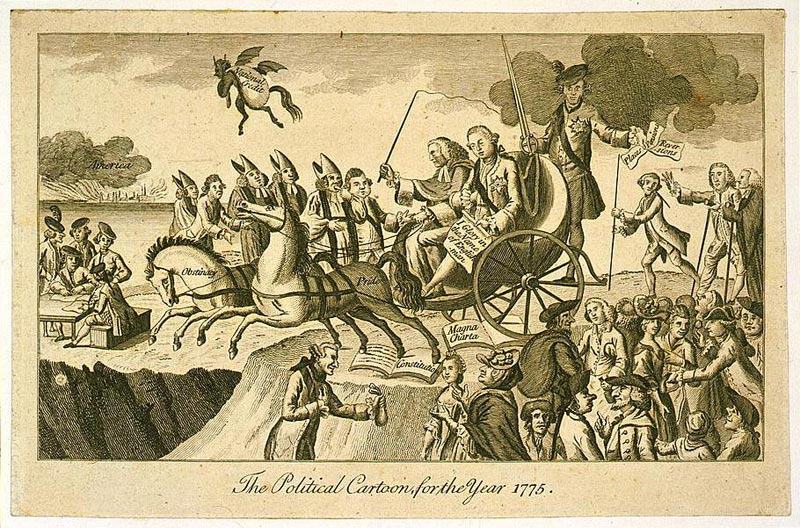The first classroom discussion I’ve ever led was for a sophomore year government class who were learning about the early stages of the formation of the US. The discussion was simple; I asked them to analyze a photo below, and I had guiding questions to help spark discussion at the start of the class period.

In the source, there were key documents that we spent time analyzing earlier on in the year, specifically the Magna Carta and the Constitution. I asked the students to analyze specific symbols within the picture (which I allowed them to find themselves) all in an effort to understand the perspective and message of the author. Using a simple think-pair-share strategy, I gave the students 4 minutes to discuss and find some key evidence that would allow them to provide an answer to the question, and I walked around during this period helping them with some scaffolding questions.
While the discussion provided some fruitful responses, I feel I did not help my students enough in learning how to analyze the source. I could have provided more scaffolding questions to the class, or better yet, I could have modeled the actions I wanted the students to take when analyzing the source. In a future discussion on the Colombian Exchange, I actually modeled how a source can be examined, and my students conducted a lengthier and more fruitful discussion, despite the fact that they were freshman as opposed to the sophomores who analyzed the photo above.
Modeling, proper scaffolding, and time devoted to small group discussions prior to bringing the discussion to the entire class has proved to be much more effective for me in my more recent discussions I’ve held.

